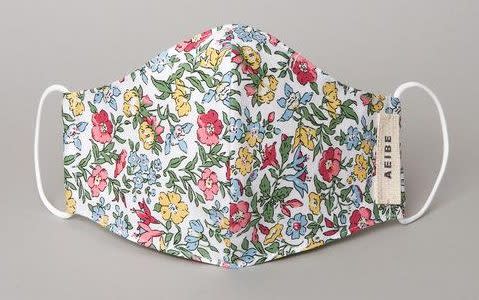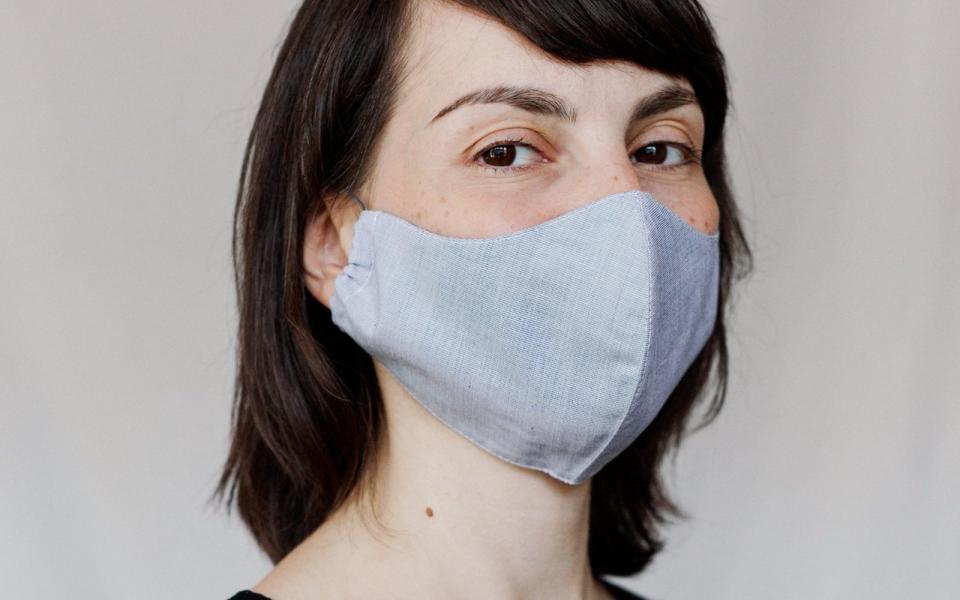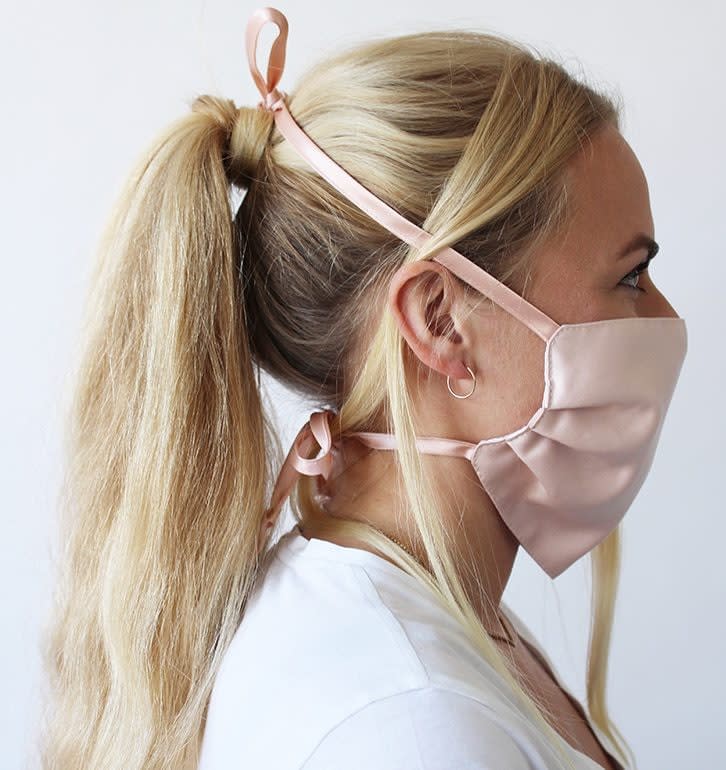The 6 things to consider before buying a face mask

The UK Government has announced that wearing face masks on public transport will be compulsory from 15th June, meaning that many of us are now trying to shop for one for the first time.
So what makes a good face mask? And how much should you be paying for one? Several fashion designers and high street brands have launched their versions of the ideal face mask over the past couple of weeks, creating reusable designs which can be washed at high temperatures, but which do not use essential PPE supplies needed by key workers.
Here are the 6 questions you need to ask yourself before buying one...
1. Does my mask need to be medical-grade?
No. The new Government guidelines state specifically that the majority of people need a ‘face covering’, as opposed to the PPE (personal protective equipment) more urgently needed by healthcare staff and other front line key workers. FFP2, FFP3 and N95 respirators, as well as medical-grade surgical masks are the types reserved for those coming into close contact with patients.
Anyone else can buy a face covering from any store, or make your own, according to official guidance. Face coverings simply need to act as a barrier to protect others against transmission if the wearer has asymptomatic coronavirus, rather than being designed to protect the wearer. Your face mask needs to cover your mouth, nose and chin securely.

Liberty print face mask with filters, £45, Aeibe.com
2. How much should I pay for a face mask?
You can buy basic, single-use face masks from local pharmacies and newsagents for a couple of pounds. However you may wish to buy something which you can use again and again, which is where the market for ‘fashion’ face masks comes in.
Starting from, on average, around £10, and stretching on up to £45 for designer coverings, you can find designs at every price point.
Mango’s homologated floral print masks promise 90% filtration efficiency and 60% breathability over 10 washes, for £12.99. Others, like Aeibe’s Liberty print design, feature an in-built filter pocket which you can keep refilling, for £45. Dai’s simple style is made from blue shirt cotton material backed with a silver-fibre antibacterial lining and is priced at £12.

Cotton chambray mask, £12, daiwear.com
3. What is the best fabric for a face mask?
As you can see, different brands boast different protection ‘bonuses’ at different price points. There is currently very little official guidance to say which of these materials is the ‘best’ for a face covering - so only go for a more expensive ‘designer’ one if you value the look of the mask or if you want to support a smaller business (several brands are also donating money to charities for every purchase).
A cotton face covering is a strong choice; cotton is naturally breathable and comfortable to wear, and can be washed at a high temperature. If you intend to wear makeup under your mask, cotton is, again, a good choice as it’s less likely that you will sweat underneath it. Copper and silver fibre backings are also popular, however will need to be cleaned in boiling water, rather than with soap in the washing machine. Synthetic materials, like polyester or Nylon are more likely to be uncomfortable to wear, as they are not naturally breathable materials.
4. What size am I?
We’re all in unchartered territory here, so there isn’t an official sizing system which you can apply to face mask shopping just yet. Every person of course has different distances between their facial features, and every brand is currently making up their own sizing, which means that you’ll find face masks fit differently at every place you buy one.

This Florence Bridge one which I own (£12, florencebridge.com) completely covers from under my eyes to quite a way under my chin - I’ve been tucking in around half a centimetre of excess material whenever I wear it, but on the model pictured in this piece you can see where it comes to. In future, I would buy a smaller one. I recommend only buying from brands that state the measurements and you should draft a rectangle of those proportions on a piece of fabric or paper at home, which you can hold against your face to at least give you a rough idea of scale and how it might look on you, before ordering.
5. Should I choose ties or elastics?
This depends on how quickly you want to put your face mask on and take it off. An elastic, pull-on mask is significantly easier to ‘throw on’ in a hurry than one which requires you to tie multiple bows to fasten it. I’ve seen some velcro and buttoned options on the market, too, however they are more likely to get tangled in longer hair.
6. What will I be wearing this with?
Finally, one about aesthetics. You may want to think about where you intend to wear your face mask. If the answer is on your commute to the office, you might choose to swerve the ditsy floral prints and picnic check gingham designs in favour of something a little more plain and business-appropriate. There are casual weekend face masks, summery designs, and wintery ones. Finding the right one for you will depend on what clothes you intend to wear with it, and where you’re going on any given day.
Have you recently purchased a face mask? Have you had a go at making one of your own? Tell us what you think about face masks in the comments section below
For more news, analysis and advice from The Telegraph's fashion desk, click here to sign up to get our weekly newsletter, straight to your inbox every Friday. Follow our Instagram @Telegraphfashion.

